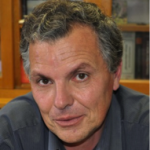Link to Pubmed [PMID] – 25903573
Link to DOI – 10.1128/JCM.00295-15
J. Clin. Microbiol. 2015 Jul; 53(7): 2084-94
Despite increasing reports of human infection, data about the optimal care of Phaeoacremonium infections are missing. We report a case of an infection due to Phaeoacremonium parasiticum and Paraconiothyrium cyclothyrioides, initially localized to skin and soft tissue, in a kidney transplant patient. Despite surgical drainage and excision of the lesion and combination antifungal therapy with voriconazole and liposomal amphotericin B, a disseminated infection involving the lungs and brain developed and led to death. We performed a systematic literature review to assess the general features and outcome of human infections due to Phaeoacremonium species. Thirty-six articles were selected, and 42 patients, including ours, were reviewed. Thirty-one patients (74%) were immunocompromised because of organ or bone marrow transplantation (n = 17), diabetes or glucose intolerance (n = 10), rheumatoid arthritis or Still’s disease (n = 4), chronic hematological diseases (n = 3), or chronic granulomatous disease (n = 3). Ten patients (24%) reported initial cutaneous trauma. Skin and soft tissue infections represented 57% of infections (n = 24), and disseminated infections, all occurring in immunocompromised patients, represented 14% of infections (n = 6). The main antifungal drugs used were azoles (n = 41) and amphotericin B (n = 16). Surgical excision or drainage was performed in 64% of cases (n = 27). The cure rate was 67% (n = 28). There were 10% cases of treatment failure or partial response (n = 4), 19% relapses (n = 8), and 7% losses to follow-up (n = 3). The death rate was 19% (n = 8). Management of Phaeoacremonium infections is complex because of slow laboratory identification and limited clinical data, and treatment relies on a combination of surgery and systemic antifungal therapy.


